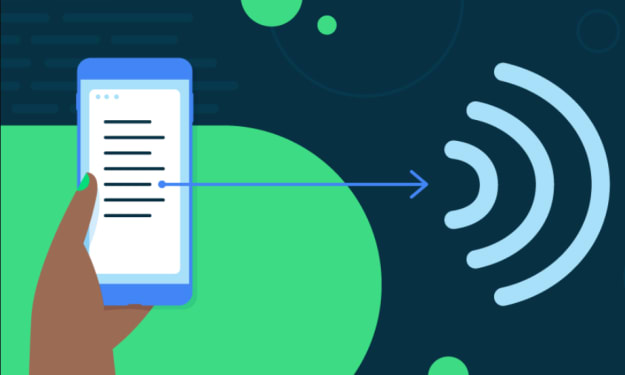What s the fastest, most efficient way to learn piano?
How do I learn piano by myself?

**How to Learn Piano by Yourself: A Comprehensive Guide**
---
Learning to play the piano on your own can be one of the most rewarding and fulfilling endeavors. Whether you're drawn to the elegance of classical pieces, the excitement of jazz, or the soulful rhythms of pop, the piano is a versatile instrument that offers endless possibilities. While self-teaching may seem daunting at first, it’s entirely achievable with the right approach and resources. Here’s a step-by-step guide to help you embark on your solo piano journey.
### 1. Set Clear Goals
Before diving into the world of piano, it’s crucial to establish what you want to achieve. Do you dream of playing your favorite songs, composing your own music, or simply developing a new skill? Setting clear, attainable goals will keep you motivated and provide direction for your learning process. Start with short-term goals, like learning to read music or playing a simple song, and gradually build up to more complex objectives.
### 2. Acquire a Piano or Keyboard
Having access to a piano or keyboard is essential. If space or budget constraints are a concern, a digital keyboard is a great alternative to an acoustic piano. Look for one with weighted keys to simulate the feel of a real piano, and ensure it has at least 61 keys to accommodate a wide range of music. Many digital keyboards also come with built-in learning tools and connectivity options that can enhance your practice.
### 3. Learn the Basics of Music Theory
Understanding the fundamentals of music theory will greatly enhance your piano playing. Start with the basics:
- **Notes and Keys**: Learn the names of the notes and their positions on the keyboard.
- **Scales**: Practice major and minor scales to familiarize yourself with different keys and improve finger dexterity.
- **Chords**: Study basic chords and their inversions to build a foundation for playing songs and improvisation.
Numerous online resources, including videos and interactive apps, can guide you through these concepts in an engaging and accessible way.
### 4. Develop Proper Technique
Good technique is the cornerstone of effective piano playing. Focus on the following aspects:
- **Posture**: Sit with a straight back, feet flat on the floor, and your hands relaxed over the keys.
- **Hand Position**: Curve your fingers slightly and keep your wrists loose to facilitate smooth, efficient movement.
- **Finger Independence**: Practice exercises like Hanon or Czerny to strengthen individual fingers and improve coordination.
Videos and tutorials from experienced pianists can provide visual guidance to help you master these techniques.
### 5. Start with Simple Pieces
Choose beginner-friendly songs and pieces that match your skill level. Many classical pieces, folk songs, and pop tunes have simplified arrangements suitable for novices. Playing familiar music can be incredibly motivating and enjoyable, reinforcing your commitment to practice.
### 6. Use Online Learning Tools
Take advantage of the wealth of online resources available to self-learners. Platforms like YouTube, Udemy, and Coursera offer tutorials, lessons, and courses covering every aspect of piano playing. Apps such as Simply Piano, Flowkey, and Piano Marvel provide interactive, gamified learning experiences that make practice fun and effective.
### 7. Practice Regularly and Mindfully
Consistency is key to progress. Aim to practice for at least 20-30 minutes a day, gradually increasing your time as you build stamina. Focus on quality rather than quantity:
- **Warm Up**: Start with scales and finger exercises to prepare your hands.
- **Divide Your Practice**: Break your session into sections, dedicating time to scales, new pieces, and review.
- **Use a Metronome**: Practice with a metronome to develop a steady sense of rhythm and timing.
### 8. Record and Review Your Playing
Recording your practice sessions can provide valuable feedback. Listening to your playing helps you identify areas for improvement and track your progress over time. It can also boost your confidence as you hear your skills develop.
### 9. Join Online Communities
Connect with other piano enthusiasts through forums, social media groups, or virtual meetups. Engaging with a community of like-minded learners can provide support, inspiration, and accountability. You can share your experiences, seek advice, and even collaborate on projects.
### 10. Be Patient and Enjoy the Journey
Learning piano is a marathon, not a sprint. Be patient with yourself and celebrate small victories along the way. The process of mastering an instrument is as important and enjoyable as the outcome. Embrace the challenges and savor the moments of musical discovery.
# How to Start Really Learning Piano: Practical Advice for Beginners
---
Diving into the world of piano can be both exhilarating and daunting. Whether you’ve always dreamed of playing or you’re just starting to explore the instrument, taking the right first steps is crucial to your success. Here’s a practical guide to help you start your piano journey on the right note.
### 1. Set Clear and Realistic Goals
Start by defining what you want to achieve with your piano playing. Are you interested in performing, composing, or simply enjoying a new hobby? Setting clear, realistic goals will give you direction and keep you motivated. Consider breaking your goals into short-term (e.g., learning a simple song) and long-term (e.g., mastering a classical piece) objectives.
### 2. Choose the Right Instrument
Your piano or keyboard choice significantly impacts your learning experience. Here’s what to consider:
- **Acoustic Piano**: Offers authentic sound and touch but requires space and maintenance.
- **Digital Piano**: Provides a close approximation of an acoustic piano with added benefits like volume control, headphone use, and various sounds.
- **Keyboard**: Portable and versatile, but ensure it has weighted keys and a full-size keyboard (88 keys if possible) to mimic the feel of a real piano.
Invest in an instrument that matches your needs and budget. The better the instrument, the more enjoyable and productive your practice sessions will be.
### 3. Learn Basic Music Theory
Understanding basic music theory will immensely aid your progress. Start with these fundamentals:
- **Note Reading**: Learn to read music notation. Familiarize yourself with the staff, clefs, and note values.
- **Scales and Chords**: Study major and minor scales and basic chord structures. These are the building blocks of most music.
- **Rhythm**: Understand time signatures, note durations, and how to count rhythms.
Numerous online courses and apps can make learning music theory engaging and straightforward.
### 4. Develop Good Technique
Proper technique is essential for playing efficiently and preventing injury. Focus on:
- **Posture**: Sit at the piano with a straight back and relaxed shoulders. Your elbows should be at or slightly above the keys.
- **Hand Position**: Keep your fingers curved and your wrists flexible. Avoid tension in your hands and arms.
- **Finger Strength and Independence**: Practice exercises that improve dexterity and control, such as scales and arpeggios.
Watching tutorial videos and studying professional pianists can provide visual examples of good technique.
### 5. Find Quality Learning Resources
Utilize a mix of resources to cover different aspects of learning:
- **Books**: Method books like Alfred’s Basic Piano Library or Bastien Piano Basics offer structured lessons and exercises.
- **Online Courses**: Platforms like Udemy, Coursera, and YouTube have countless tutorials from beginner to advanced levels.
- **Apps**: Interactive apps like Simply Piano, Flowkey, and Yousician provide guided lessons and feedback on your playing.
Experiment with different resources to find what works best for your learning style.
### 6. Start with Simple Pieces
Begin with easy, familiar pieces that you enjoy. This approach builds confidence and keeps you engaged. Many popular songs and classical pieces have simplified versions for beginners. Gradually increase the complexity as your skills improve.
### 7. Practice Consistently and Mindfully
Consistency is key to progress. Aim to practice daily, even if it’s just for a short time. Here’s how to make your practice effective:
- **Warm-Up**: Start with scales or simple exercises to prepare your hands.
- **Structured Sessions**: Divide your practice time between learning new pieces, refining technique, and reviewing previous work.
- **Use a Metronome**: Practice with a metronome to develop a steady sense of rhythm.
Focus on quality practice rather than just logging hours. Pay attention to details and practice slowly to avoid developing bad habits.
### 8. Record Your Progress
Recording your practice sessions allows you to track your improvement and identify areas that need work. Listening to yourself play can provide valuable insights and help you appreciate your progress over time.
### 9. Seek Feedback and Join Communities
Feedback is crucial for growth. Share your playing with others, whether through social media, online forums, or local music groups. Engaging with a community of fellow learners can provide support, encouragement, and constructive criticism. Pianoforall Review
### 10. Enjoy the Process
Learning piano is a journey, not a race. Celebrate your achievements, no matter how small, and enjoy the process of making music. Stay patient and persistent, and remember that every great pianist started as a beginner.
About the Creator
peter
Content about cars, motorbikes, technology, news
Enjoyed the story? Support the Creator.
Subscribe for free to receive all their stories in your feed. You could also pledge your support or give them a one-off tip, letting them know you appreciate their work.






Comments
There are no comments for this story
Be the first to respond and start the conversation.